
This post contains spoilers for “The Racket” (1928), so if you want to wait until you see the movie for yourself, don’t read any further!
Marie Prevost and Bette Davis are the objects of my two current movie projects, but unfortunately I’ve learned a tough lesson while trying to watch all of their films: Some of their films are remarkably, embarrassingly, teeth-grindingly bad. It was a tough lesson to learn but a good one, I think, as it’s forced me to work harder to find the gems amongst the rubble. When I pop a DVD into the player, I hope there will at least be some tiny bit of interest to find in the film. Maybe a young pre-fame actor will have a small part in the movie or the sets will be 10 lbs of art deco awesome in a 5 lbs bag, it doesn’t really matter as long as it makes the movie worthwhile. Nowadays, it’s all I expect.
It might sound bitter to have such low expectations of films before I even watch them, but I prefer to think it’s not so much cynical as realistic. It also means I appreciate the good films better when I stumble across them.
“The Racket” (1928) is one of those good films.
Well over a decade ago, when I was a newbie to silent films, I asked on alt.movies.silent if there were any silent film noirs or early precursors of the genre. No one had any concrete examples, although several people mentioned some crime dramas as being “proto” noir. In the past I’ve posted about early talkies “Alibi” (1929) and “The Locked Door” (1930), both of which fall into what I’d consider the proto noir category. “The Racket” is not only silent but a year earlier, making it the earliest proto noir I’ve seen thus far.
“The Racket” premiered on TCM back in 2004 as part of their Howard Hughes  festival. The 2004 showing was the first time it had been seen in several decades, as the film was presumed lost until it was found in Hughes’ estate after he died. The film was restored in a joint project between TCM and UNLV, and the print is lovely. I’m not a fan of restoring intertitles by replacing all the frames with a single cleanest frame — you can tell the picture is static when they do that, and it’s very jarring — but that is my only (nitpicky) complaint about the restoration.
festival. The 2004 showing was the first time it had been seen in several decades, as the film was presumed lost until it was found in Hughes’ estate after he died. The film was restored in a joint project between TCM and UNLV, and the print is lovely. I’m not a fan of restoring intertitles by replacing all the frames with a single cleanest frame — you can tell the picture is static when they do that, and it’s very jarring — but that is my only (nitpicky) complaint about the restoration.
“The Racket” has shown on TCM at least twice since then, most recently in 2010, but also in the summer of 2008 when it showed on Silent Sunday Nights and I missed it, resulting in a bit of a temper tantrum on my part. I am not proud of this fact, but I shan’t apologize, either. I was so disappointed because I had seen the first few minutes of the movie back in 2004 but didn’t stick around for the rest. I was a naive waif who thought TCM reran every movie at least once a year. Hahaha.
So I settled in and started to watch the movie, excited to hear Bob Osborne talk about Marie Prevost for the first time. Except he barely mentioned her at all, and when he did, you know what? He pronounced her name “Provost.”
Provost. Really, Bob? Really? I wonder if he did the same thing in 2008. The next showing of “The Racket” won’t have an intro or outro, which I guess I should be thankful for.
The music for “The Racket” is by the esteemed Robert Israel, and anyone who has seen silent films has heard Israel’s scores. I recently re-watched “The Block-Heads” and his score was, as they almost always are, very good. So why the score for “The Racket” sucks so bad, I have no idea. Early in the film Nick Scarsi (Louis Wolheim) enters into a scene quietly and dramatically, appearing out of the shadows, but the music is a very lighthearted, reedy affair that mimics a jazz score. It’s completely inappropriate. Later at a police station, the music is a silly, undignified march.
At this point I was barely five minutes into the film and extremely disappointed by the work of two Bobs who weren’t even in the film. I was so distracted, I wasn’t sure I wanted to continue. I know, I sound fussy and temperamental, but when it comes to films I am fussy and temperamental. Yet I don’t ask for much. I just want film historians to pronounce Marie’s name properly and I want music that at least tries to fit the action on the screen. That’s all.
The cinematography and set design in “The Racket” is far more advanced than any other silent I’ve seen.
These complex, detailed sets of realistic industrial and urban scenes are common enough by the early 1930s but quite rare in silents. I love the optometrist’s bright eyeglasses sign and the geometric design on the machinery in Nick’s bootleg booze factory. (Originally I had placeholder screencaps here from an old VHS copy of “The Racket,” and replaced them in March, 2010 with better screen grabs with more detail, thanks to that gorgeous print TCM shows.)
“The Racket” is about police Capt. James McQuigg, played by Thomas Meighan, ostensibly the star of the show. When I first saw the film, I felt Meighan’s performance was bland while his mannerisms were broad, which was a weird combination that simply didn’t work for me. The 3rd time I viewed the film, I really changed my mind about Meighan. There’s a subtlety to his facial expressions and his performance that I honestly think I couldn’t see because of the old, poor quality copy I had. That’s my story, anyway. The more I saw his eyes flicker in some moments, his teeth bared in others, I realized Meighan wasn’t really the weak link in this film at all.
McQuigg is on a quest to take down Nick Scarsi and his bootlegging racket. That night, Scarsi and his boys decide to start ‘legging in competitor Spike Corcoran’s territory. McQuigg knows that there will be trouble and plans to follow the bootleggers. Meanwhile, Scarsi tries to distract McQuigg by inviting him to brother Joe Scarsi’s party.
Nick’s delivery of illicit hooch into Corcoran’s territory goes awry and one of his men, Chick, is arrested. Later that night, McQuigg shows up at Joe’s party to gloat about the arrest of Chick, only to find he has already been bailed out.

Blonde torch singer Helen (Marie Prevost) sings to Joe at the party. Helen finds him cute but also knows that he’s Nick’s educated and rich younger brother. Nick chases her off as a no good “gold digger” and humiliates her in front of the audience, but Nick soon discovers Helen is stronger than she appears. His anger only strengthens her determination to land his brother Joe.
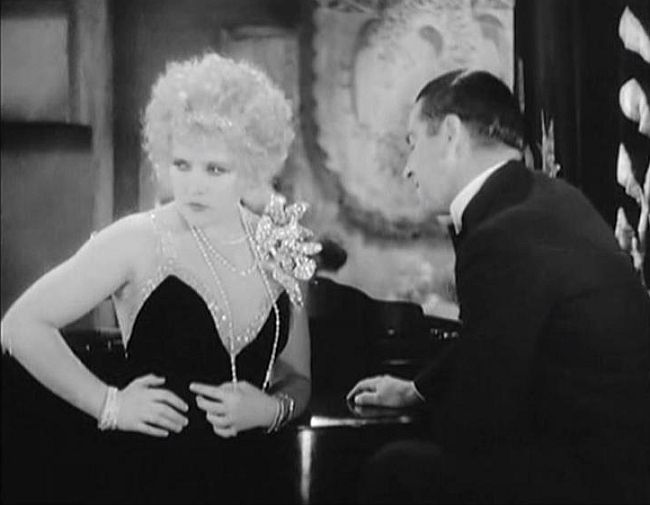
Sigh. Marie is so pretty in this film. I’m a big fan of the wild and puffy blonde ‘do favored by harlots and hussies in the late 1920s. (If you want to see what I mean about how the details of the film were lost in the old copy I first watched, compare the above screencap with the previous one I had.)
Spike Corcoran, the ‘legger who covers the territory Nick Scarsi just tried to infringe on, shows up at the party. He and his men are in the mood for revenge and quietly surround Nick’s table. Then the cops show up and surround Spike’s men. In the standoff, Nick shoots Spike while his boys do a great job of covering it up. McQuigg takes Nick in but Nick is bailed out quickly just like his man earlier that night. Before he leaves, McQuigg tells him it’s the last murder he’s going to get away with in his district, and he’s apparently right: Nick pulls strings and gets McQuigg transferred way out into the boonies.
The press wants the story about McQuigg’s transfer, so reporters Miller and Pratt (Skeets Gallagher and Lee Moran, respectively) camp out at his new sub-sub-suburban police station. McQuigg won’t talk, but they get some fun out of newbie reporter Ames, fresh from The Omaha Bee. If I owned a newspaper, I’d call it The Bee. No lie. Ames is so new the only coat he has is his college frat rat coat, and the older, drunken, veteran reporters give him a hard time. Eventually Miller and Pratt get the brilliant idea of tricking Nick Scarsi into telling them the story, so they head out to find the gangster.
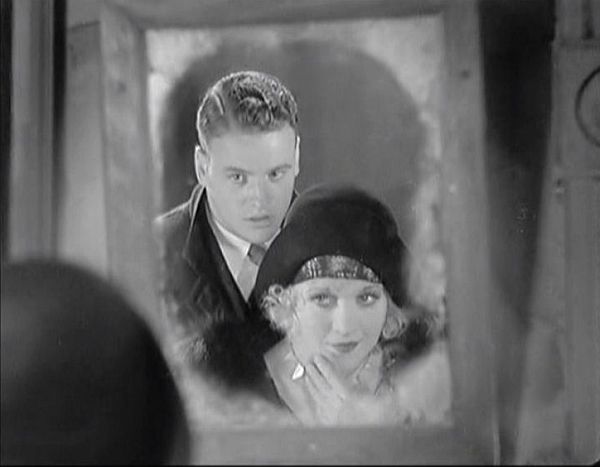
Scarsi is at Spike’s funeral when Miller and Pratt set themselves nearby and stage whisper that McQuigg told them Scarsi had him transferred because he was scared. McQuigg said no such thing, but Nick thinks it’s true. He replies to the reporters that he just wants McQuigg gone until the elections are over, elections which Nick has apparently rigged.
That night, Scarsi’s brother Joe is on a date with Helen. He proposes to her, but it’s a “hey baby, let’s do it since we’re engaged” proposal and not a genuine one. When she won’t give it up, he kicks her out of the car. It’s a dark, near-deserted road, except for a cop who comes along and sees Helen ejected from the car. Immediately he knows what’s up and goes to bust Joe’s chops, but Joe speeds off in a panic, runs down a woman, and crashes into a guard rail. Way to not panic, Joe.
He’s arrested and taken to the police station which happens to be McQuigg’s new police station. McQuigg locks Joe up and moments later jails Helen, too, in his overzealousness. Joe is bailed out almost immediately. He tells Nick that Helen has agreed to testify against him about the hit-and-run, so Nick comes to the station to get Helen, and by “get” I mean “murder, shoot, and/or kill”. Another policeman is at the station and, in a terrific, tense scene, confronts Nick and stops him in his tracks by telling him just why he doesn’t like crooks:

Oh, slang, you are so fickle. Needless to say, Nick “bangs” the cop who has confronted him. Newbie reporter Ames, who befriended Helen while she sits in a cell, returns in time to see Nick shoot the policeman. He helps get Nick arrested, but again a bogus writ of habeas corpus arrives within minutes, courtesy of a huge bribe paid to the DA. McQuigg tells the DA that he can’t let Nick go without looking bad in the upcoming elections. The DA knows it’s true, but he’s too scared to do anything since the only witness was Ames, and he knows the mob is going to kill Ames to keep him from testifying. They’d kill the DA, too, if they had to.
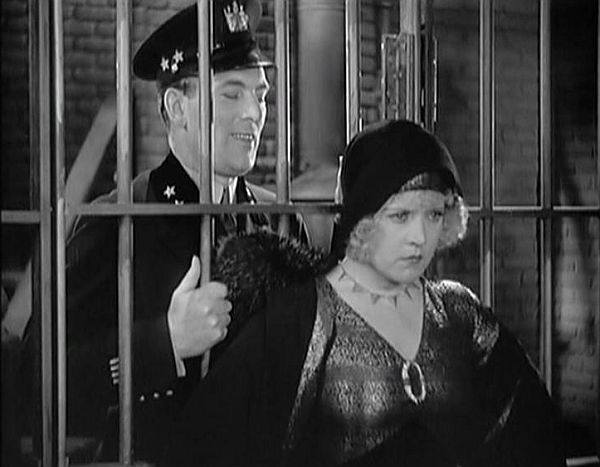
Helen is worried about Ames for the exact same reason, so she talks her way into speaking with Scarsi before Ames has to officially sign a report. Helen quickly tricks Scarsi into confessing, saving both Ames and the DA from having to make potentially life-ending choices. The tough torch singer and the determined cop share a moment before she leaves, a moment where she reflects on just how “good” the good guys actually are. And on that note of moral ambiguity, the film fades out.
There is a wee bit of delicious decor to be found in “The Racket” (I added a new picture here on 3/25/10):
I often look for old product placement in movies, not for any historical reason or for research, but just because I like to look at old advertisements and product boxes. This is a bundle of items Ames brings Helen while she’s in prison. Even though the items appear upside down in the film, the fact that they appear in a slightly lingering shot with their brand names visible makes me think this is product placement. Product placement was certainly in use by 1928, as evidenced by the famous Hershey’s incident in “Wings” a year earlier.
Here you can see Mennen Borated Talcum, Squibb’s Dental Cream, and Prophylactic Toothbrush. The Mennen can went through many design changes over the years, but this auction seems to have had the exact can shown in the film. Despite what Modern Mechanix blog says, you can’t convince me that either “prophylactic” or “mouth to mouth” were deliberate sexual innuendo.
In all, I’ve only seen about 8 of Marie’s films at this point, and this is by far the best one yet. You don’t have to be a fan of Marie to like the movie; if you’re a fan of Meigham, Louis Wolheim, or even Skeets Gallagher you will like this film. Like silents? Like crime dramas? Have 80-odd minutes to kill? Watch this movie. You will not be sorry.
***
If you’re interesting in using these posts for research, please note the following:
1) You can use my blog posts for sources, but they must be credited in footnotes or bibliography (as should any book, blog, magazine, or other source). You cannot just cut and paste sections of my blog into your own work. Please know that I will not just ignore copyright infringement, should it occur.
2) There may be errors in my blog posts. You’re responsible for doing your own research and verifying anything you read.
3) I will not help you with your Marie Prevost research. Please don’t ask.
4) I own some memorabilia, photos, archival docs, etc., but I do not lend them out for any reason. Please don’t ask.
5) Despite any claim you may have heard to the contrary, I have not assisted nor collaborated with anyone in their book or article on Marie Prevost.
Thank you for understanding.




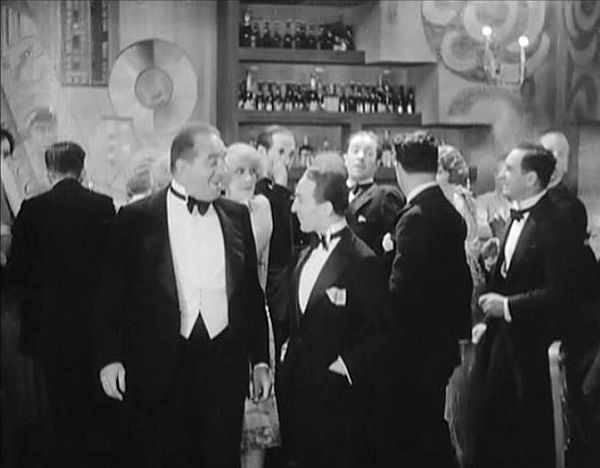


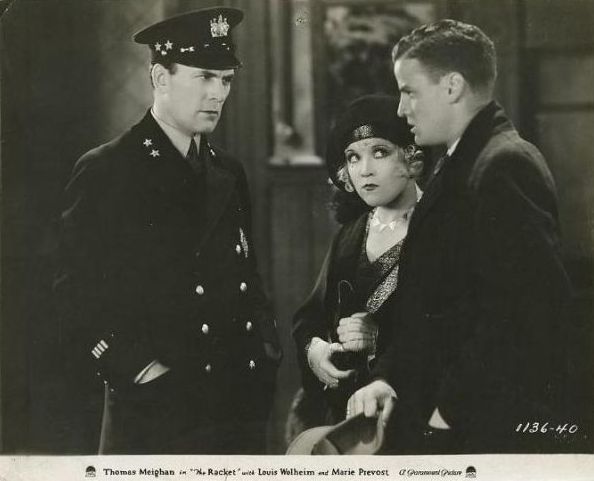
Stacia, Grapevine Video has just released Up in Mabel’s Room to DVD — I don’t know if you were aware if it, but I thought I’d pass the info along.
I like the look of the Racket film, I’ll record it for sure. That’s a helluva great Screenland magazine cover!
OOOOOOOOOH YAY! Thanks for telling me, Ivan. I have a copy of that film, not a good one though. I just got a job and today alone made enough to pay for 2 (two!) DVDs. I’m goin’ shoppin’!
I’ve bid on that issue of Screenland on eBay 5 times, Van, and haven’t won it yet. I do have some other issues, but some of the Marie Prevost magazine covers are downright odd.
I just noticed Louis Wolheim is in this one, too! I love that lug. BTW, congrats on the job!
Well, I’ve gotta say I liked the music and Meighan’s performance more than you did- I think Scarci’s music is peppy on his first entrance because he comes in because at that point he’s a rather cocky figure and semi-comic: he’s almost likable until we find out how cold blooded he is. I won’t belabor the point. In any case it’s quite a film and to me this is a 30’s precode but without sound. There are a lot of title cards but they’re adroitly edited in and the film moves at a good pace, at least until the second part where the stage play makes itself felt. I loved the funeral scene & Scarsi’s comic rage-and yes, Skeets Gallagher was the cherry on that particular sundae.
good lord, some of my post isalmost unreadable, but I’ll leave it as it is- mea culpa.
Thank you for another fabulous review! I’m so glad to find another Marie Prevost fan. It’s great that TCM shows some of her films that you can’t get on DVD. I just love Marie as a blonde :-) Did you know that she was having a torrid affair with Howard Hughes when she made The Racket? I’d like to add a link to this review on my new web site (MariePrevost.org)
I have a DVD-R of the TCM broadcast of this that I haven’t watched yet. What the hell is wrong with me? I’d better get on it; the film sounds absolutely wonderful from your excellent write-up!
Yes, if you have a TCM broadcast version, you have to watch this, and stat. Doctor’s orders. P.S. I am not a doctor.